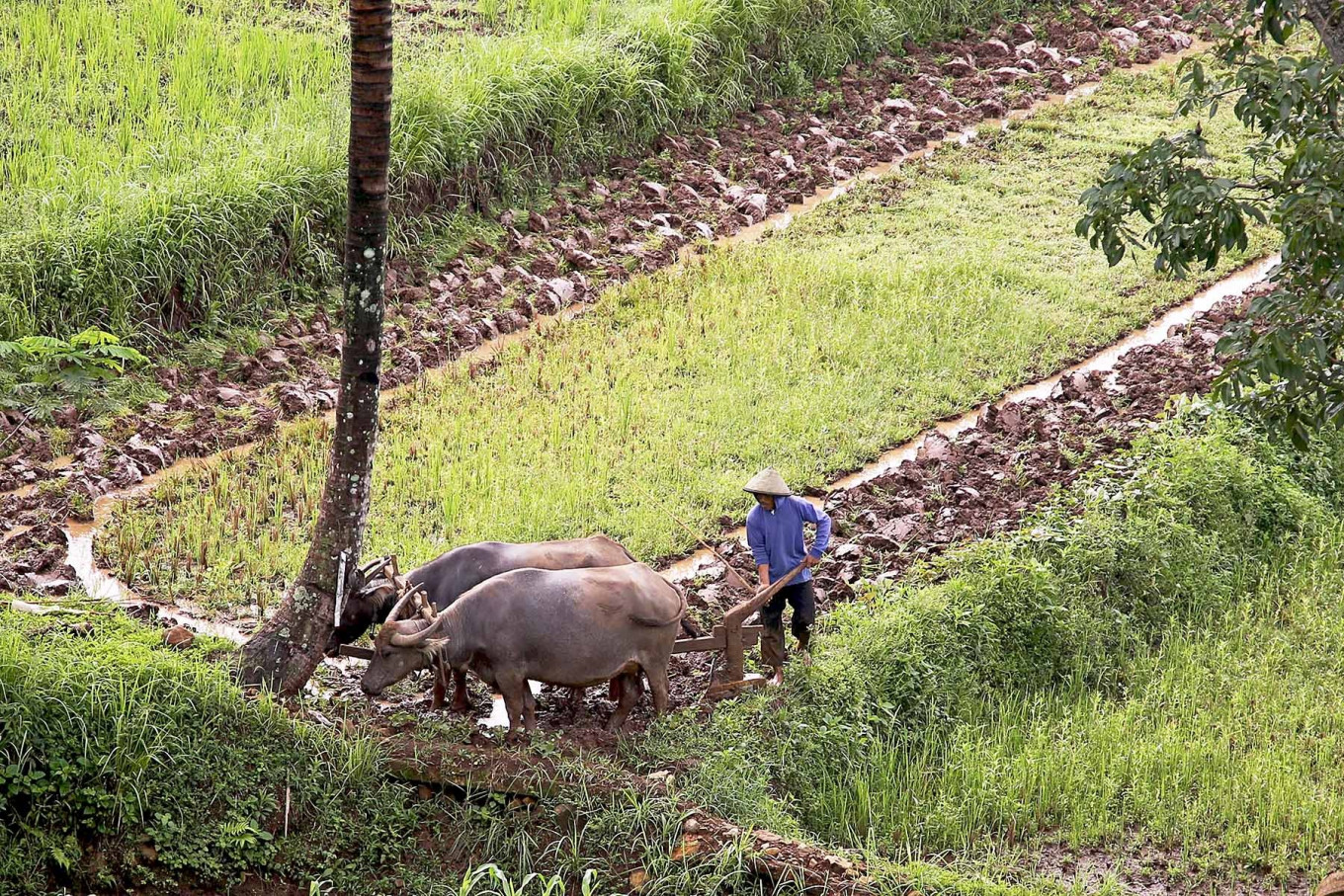Popular Reads
Top Results
Can't find what you're looking for?
View all search resultsPopular Reads
Top Results
Can't find what you're looking for?
View all search resultsWorkers turn to farming as job market dries up
Nearly 3 million Indonesians joined the agricultural workforce last year as millions, mostly in towns and cities, lost their jobs and businesses during the economic downturn.
Change text size
Gift Premium Articles
to Anyone
B
usiness owner-turned-farmer Ijon Purba, 33, closed his small coffee shop in Medan, North Sumatra, early last year to plow the earth of his hometown, Liang Pematang village, in neighboring Deli Serdang regency, amid the pandemic.
Medan’s mobility restrictions prevented customers from visiting his 1-year-old shop, forcing him back to his village, where he has been farming coffee beans and shallots on less than half a hectare of land to make ends meet for his family.
“Laborers and professionals in cities were not the only ones who suffered from the economic downturn; coffee sellers also faced a very bad threat,” Ijon told The Jakarta Post in a phone interview on Thursday.
"I still have the option of running my shop, but I think I'm choosing to concentrate on the plantation."
Ijon is among the 2.77 million Indonesians who joined the country’s agriculture workforce last year as millions, mostly in towns and cities, lost their jobs and businesses during the economic downturn.
Statistics Indonesia (BPS) data shows that Indonesia’s agricultural workforce grew 7.8 percent year-on-year (yoy) to 38.22 million in August 2020. The proportion of agricultural workers to the overall workforce rose 2.23 percentage points to 29.76 percent that month, contributing the largest share followed by trade and manufacturing.
BPS head Suhariyanto said on Wednesday that the proportion of agricultural workers had increased during the pandemic, but the sector’s contribution to GDP remained the same at 13 percent, which risked the sector’s overall productivity.
“Amid the pandemic, the agriculture sector kept growing but its burden got heavier,” he said in a virtual discussion.
The rise in agriculture workers happened at a time when Indonesia’s unemployment rate climbed to 7.07 percent in August 2020 from 5.23 percent in the same month the previous year. It rose 2.69 percentage points in urban areas and 0.79 in rural areas, showing a more severe impact in urban centers.
As a comparison, manufacturing recorded the steepest fall in workforce contribution at 1.30 percentage points yoy to 13.61 percent in August 2020.
“Due to the pandemic, unemployment rose by 2.67 million people and the increase was higher in cities. With no jobs, they returned to their villages,” Suhariyanto said.
While most sectors were hit hard by the pandemic, the agriculture sector remained resilient, growing 1.75 percent yoy in 2020 — though the pace was half that of the previous year at 3.61 percent.
Read also: Agriculture resilient to pandemic’s impact
However, the problems of low education and old age still linger among the agricultural workforce. BPS data shows that 65 percent of the workforce had an elementary-level education or lower, while less than one-fifth had a high school-level education or higher.
Furthermore, nearly one-third of the workforce were between the ages 45 and 59, and less than one-fifth were below 30 years of age. The sector accounted for the largest share in poor households at 46.3 percent last year, while, in comparison, manufacturing accounted for 6.58 percent.
“It should concern us that right now, the agriculture sector is dominated by those who are less-educated and elderly, so going forward, we need to find a way to encourage the youth to get into the sector,” said Suhariyanto.
The workforce shift will last as long as the pandemic continues to batter the workers’ original job sectors, said Institute for Development of Economics and Finance (Indef) executive director Tauhid Ahmad.
“Many of them are actually half-unemployed, became jobless and returned to their villages. Once the situation recovers, the agriculture workforce will decline. This is what is expected to happen amid the economic recovery.”
For this year, Tauhid forecasted the agriculture sector to grow 3 percent under the best-case scenario, wherein the pandemic subsides, and 2 percent under the worst-case scenario, wherein the outbreak rages on.
The workforce increase might further burden Indonesia’s agriculture sector as its workers’ productivity was already low, according to Indef economist Bustanul Arifin, who specializes in agriculture.
“If the sector can bear the burden, that’s good. But if there is the consequence of declining productivity, this is very serious,” he said.
Indonesian Farmers Union (SPI) chairman Henry Saragih confirmed the agriculture workforce had increased during the pandemic as people sought a new source of livelihood.
Given the challenges farmers face during the pandemic, the government has to expand its stimulus for the agriculture sector to cover not only the downstream but also the upstream agriculture industries, Henry said.
“This can be done by raising the budget and provide a price guarantee that benefits farmers,” Henry told the Post via text message on Thursday.










